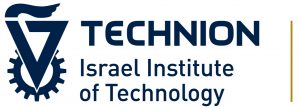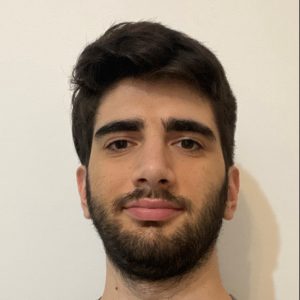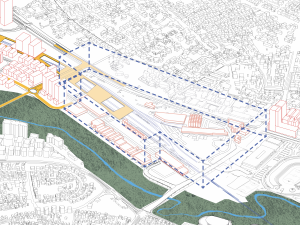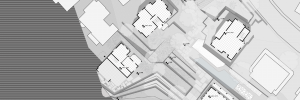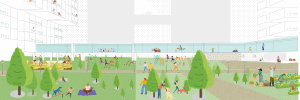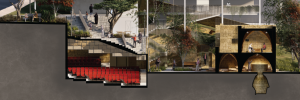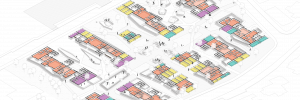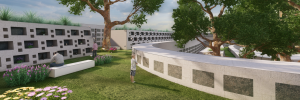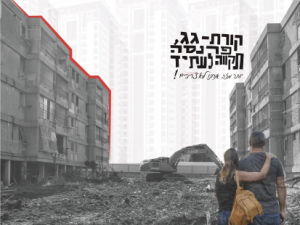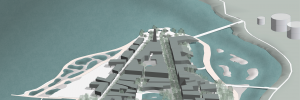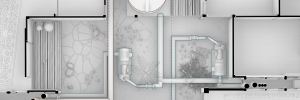Metropolitan Crosswalk
Edge cities result from sprawl-based development that originated on the outskirts of towns. Edge cities typically host large retail stores, office parks, industrial complexes, and sports facilities, all of which are surrounded by vast parking lots and multi-lane highways. The urban fabric of an edge city does not take into account the human scale and discourages a pedestrian-based lifestyle. In recent years edge cities have become the target of urban renewal projects in Israel. This project examines their redevelopment process through a case study of an edge city located on the municipal borders of Tel Aviv, Ramat Gan, and Bnei-Brak. The site hosts multiple sports complexes, large chain retail stores, and offices. In addition, the site is severed by the Yarkon river, railway tracks, and wide roads, which create an archipelago of isolated enclaves on a metropolitan scale. Long-term future plans, mainly the tunneling of the railway tracks, may offer an opportunity to create an active urban fabric in the distant future, yet a solution for the near future is needed.
The project proposes the creation of an active urban fabric based on two main elements: the street network and an upper vertical platform. The grid is planned so as to create a continuous street network once the railroad is shifted underground. In the meantime, a connection between the enclaves is achieved by means of the vertical platform, which allows them to remain active despite the rifts. The project proposes urban design elements that overcome the existing rifts while planning ahead towards a continuous active urban fabric in the future.
